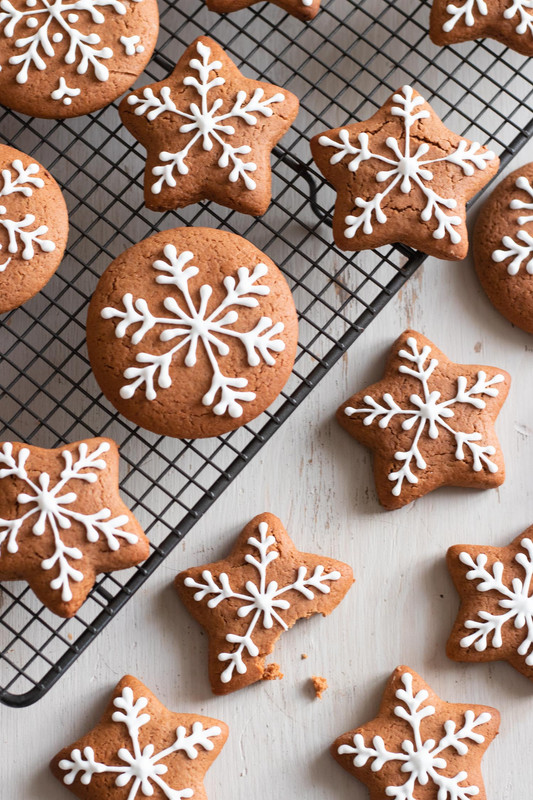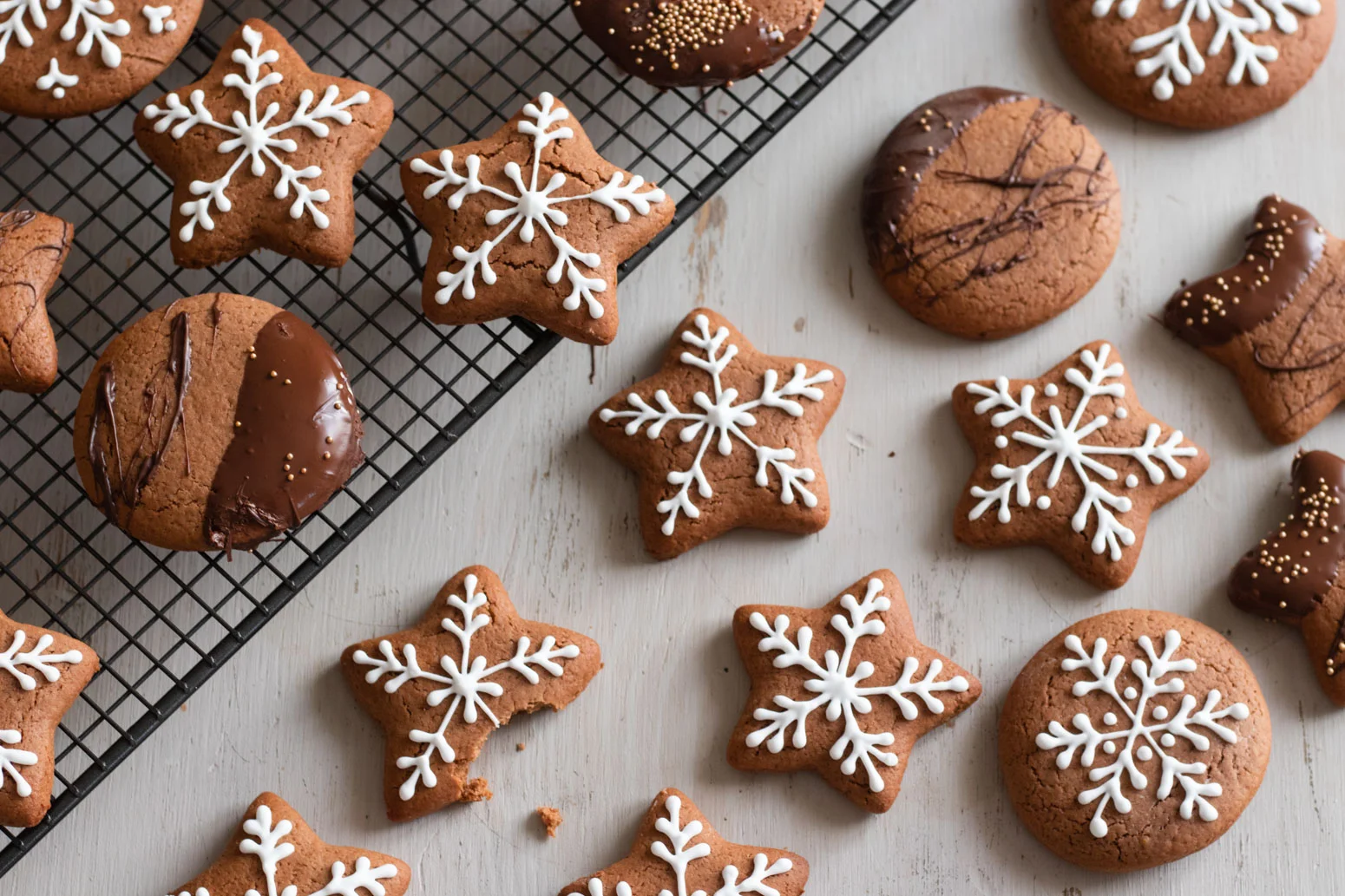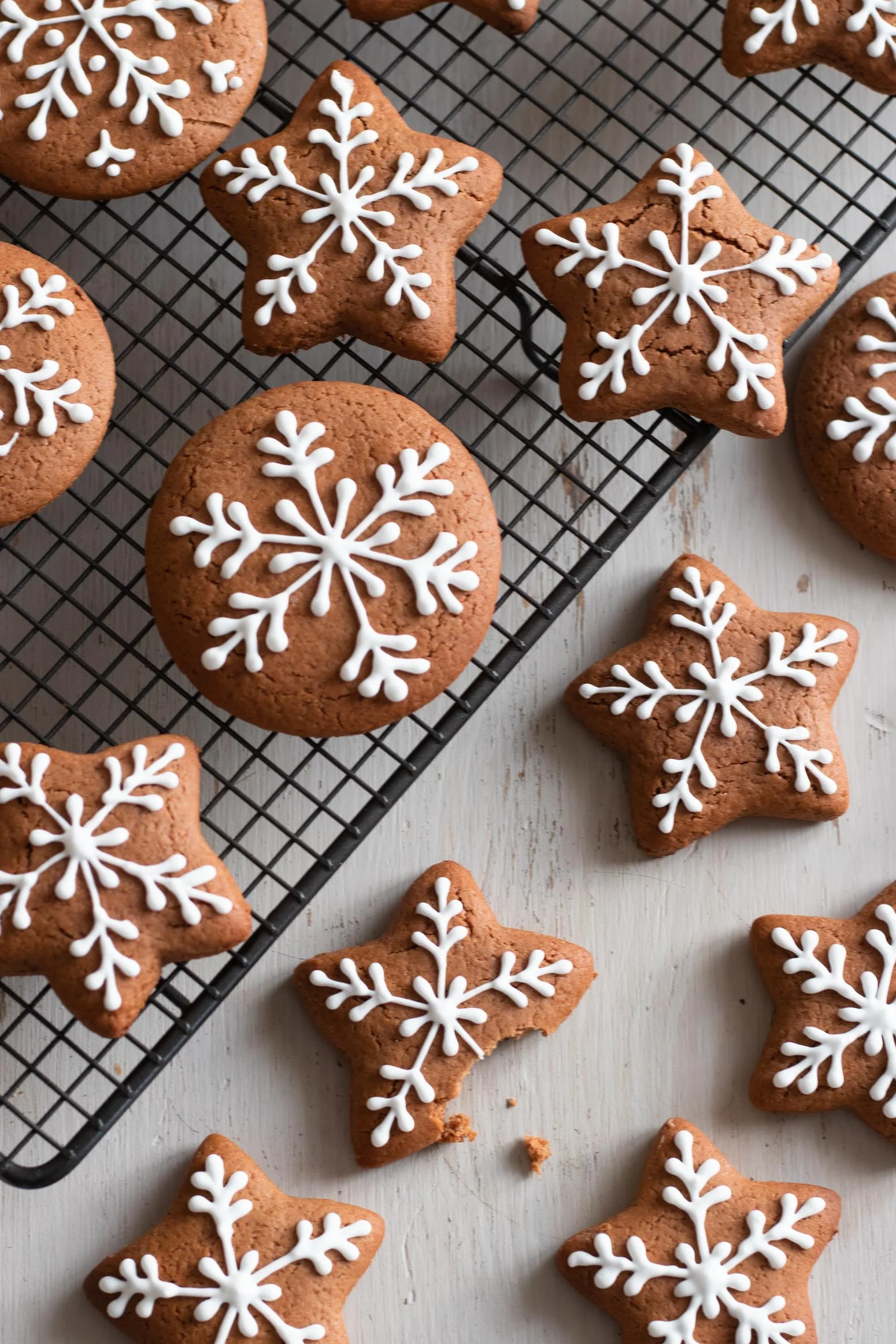Lebkuchen: German Gingerbread Cookies
A few weeks ago I teamed up with my wonderful Instagram friend Eva (@gingerbychoice) to do a Christmas collaboration. Suffice to say I pounced on the idea. As a self professed germanophile and Christmas junkie it I found that it was the perfect fit for me, as I firmly believe that there are 11 months to a year and then there’s the Holidays. In fact I’m so smitten by the Holidays that my mom and I built a business (a rather successful bakery for that matter) out of it, in my wonderful hometown of Bogota, Colombia.
By the way check out her beautiful blog here and her Instagram feed here
Christmas traditions
I had an amazing childhood, growing up in what most people would consider a cultural hodgepodge home. My mother is a Spaniard, who happened to go to the German school and has ingrained all sort of German traditions, my father a practicing Sephardic jew of Turkish and Belgian origin. Add to the mix my favorite uncle, a Hungarian-Swedish, determined to bring his yuletide traditions, and you end with a fantastic array of foods, celebrations and general good cheer that carried on for a bit over a month. Truth be told, I don’t really know how we managed to make everything work so seamlessly, but we did.
Let me illustrate what our Holidays look like. Hanukkah usually comes first, eight days of presents, family, food and the delight of lighting candles, which I’m a sucker for. Next, or sometimes during depending on the Jewish calendar, comes “El día de las velitas” (which translates to the Day of Candles, a Colombian Holiday where everyone hits the streets to light candles with their neighbors), then it’s time for “the Novena” (another Colombian tradition where we get together to celebrate, pray, eat, drink, sing, pull pranks on each other, and be generally merry during the 9 days prior to Christmas). That means that by now we have celebrated for at least 17 days when it’s time for Christmas, and boy do we go all out, the buffet and amount of presents under, around, close to and sometimes even far from away from the tree are obscene and all I can say about the decorations is that I think my mom tries to compete with Macy’s every year.
By the time New Year’s Eve shows up we are several pounds heavier, but all the happier. Luckily Colombian traditions include packing a bag, and lapping around the neighborhood with it at 12pm to ensure you travel plenty next year, I tend to think the tradition actually sprung from the necessity to aid with digestion. Last but certainly not least is “Reyes” or Epiphany. Celebrated January 6, it’s the day when Spanish kids get their presents from the Three Wise Men.
All of this to illustrate the amount of amazing food we have, but out of all delicious treats, there is one I particularly love: LEBKUCHEN. Not only are they seriously delicious, but their history is quite fascinating.
Lebkuchen history
When German Crusaders came back from the Orient, they brought home a bounty of spices, including but not limited to ginger, cinnamon, nutmeg, and cloves. Spices became all the rage in the Middle Ages. Not only were they highly appreciated for their flavor but for their healing and food preserving properties as well. During medieval times people actually regarded food as medicine and as way to keep themselves healthy. Spices played a key role. (If you would like to read more on medieval food and etiquette check out this post : https://www.michellebessudo.com/blog/saffron-honey-pear-pie).
Fast forward a couple of centuries, to a period when sugar became more widely available, spices made their way into the dessert and sweets realm in the form of Lebkuchen. However these sweets were considered to be such an elegant delicacy that there were laws prohibiting them from being made by anybody that was not a certified member of the newly created Lebkuchen guild. The recipe was so zealously guarded that only the city of Nuremberg had and official guild. As time passed and spice prices went down, people started trying to copy the aromatic cookie in their homes. Variations started popping up all over Europe, like Pepparkakor or Gingersnaps in Sweden, Gingerbread in Switzerland where cookies began being cut into boy and girl shapes in honor of Hansel and Gretel, or Pain d’Epices in France amongst others.
Yet the discovery of the New World introduced a key ingredient that revolutionized Lebkuchen forever, chocolate. This is definitely the moment when Lebkuchen production exploded. In fact Lebkuchen were so highly appreciated that they were a suitable wedding gift and people could pay their taxes with them. Yes, they are that delicious. And while I don’t think the IRS takes Lebkuchen as payment these days or that your best friend asked for some in her wedding registry, I am pretty sure you and your family will love this recipe.
The recipe I’m sharing with you happens to be the one we made in both our bakery and home. It’s a tried and true adaptation of an official Lebkuchen recipe from the 17th century.

Lebkuchen: German Gingerbread cookies
Deliciously aromatic and chocolatey, Lebkuchen happen to be the original gingerbread cookie. Switch up your cookie repertoire with this delectable recipe from the 17th century.
ingredients:
- 100 g of butter
- 175 g of sugar
- 1 tablespoon of vanilla extract
- 1 egg
- 1 egg yolk
- 100 g of honey
- 2 tablespoons cocoa powder
- ½ teaspoon ground anise (1 g)
- 1 teaspoon ground cloves (2 g)
- 1 teaspoon ground cinnamon (2.5 g)
- 1 teaspoon ginger (2 g)
- 1 peel of lemon zest
- 1 pinch of cardamom (.5 g)
- 1 pinch of nutmeg (.5 g)
- 1 teaspoon baking powder (5 g)
- 3 tablespoons of milk (50 g)
- 450 g flour
- 200 g powdered sugar
- 1 egg white (preferably pasteurized)
- 2 tablespoons of lemon juice (30 g)
instructions:
- Preheat the oven to 350 F.
- Soften the butter and add the sugar, vanilla, egg, yolk, & honey
- Mix the flour with the baking powder, cocoa powder and the spices, sift and add to the previous mixture little by little alternating it with the tablespoons of milk. Add the rest of the flour until there is a smooth dough. Do not over knead. If it was a bit sticky put it in the fridge for a while.
- Stretch the dough with a rolling pin until it is ½ cm thick and cut the biscuits.
- Bake for 10 minutes.
- allow them to cool completely before decorating
- Beat egg white with sifted powdered sugar and the lemon juice so that it is a thick but liquid mass with an electric mixer until it has a heavy cream consistency, add a few more drops of lemon juice or powdered sugar if needed.
- Decorate cookies as desired.
- *You could also alternately dip the cookies in melted dark chocolate instead
Tag @michellebessudo on Instagram and hashtag it #michellebessudo so I can share it with the world!









